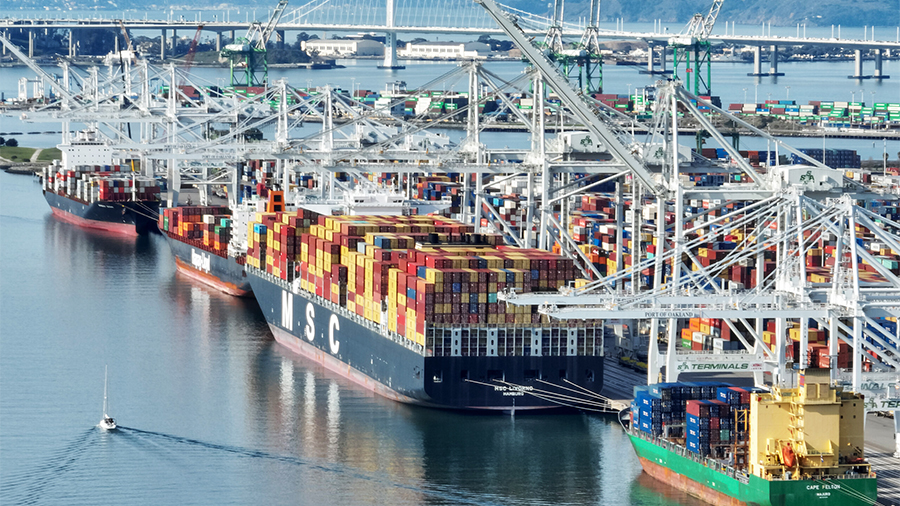Imports set another record high this spring as the nation’s major container ports worked to reduce congestion and retailers stocked up before dockworkers’ West Coast labor contract expired, according to the monthly Global Port Tracker* report released by the National Retail Federation.
Hackett Associates compiled the report.
“Cargo volume is expected to remain high as we head into the peak shipping season, and it is essential that all ports continue to operate with minimal disruption,” NRF Vice President for Supply Chain and Customs Policy Jonathan Gold said. “Supply chain challenges will continue throughout the remainder of the year, and it is particularly important that labor and management at West Coast ports remain at the bargaining table and reach an agreement.”
The contract between the International Longshore and Warehouse Union and the Pacific Maritime Association expired July 1, but cargo operations are continuing. NRF and more than 150 groups wrote to President Biden last week asking the administration to work with both sides to avoid disruption.
Ports saw a surge in activity this spring as a slowdown in cargo from Chinese factories closed by COVID-19 gave them access to clear built-up congestion. Retailers shipping in seasonal merchandise and importing other goods early to avoid problems related to the contract negotiations may have also contributed to the volume.
“Congestion of ships waiting to berth on the West Coast has eased, and we expect to see the same on the East Coast as carriers begin to return to their normal patterns of port calls,” Hackett Associates Founder Ben Hackett said. “After a short period of decline, freight rates are on the rise again as congestion in Europe and idle vessels there take capacity out of circulation.”
U.S. ports covered by Global Port Tracker handled 2.4 million Twenty-Foot Equivalent Units, one 20-foot container or its equivalent, in May, the latest month for which final numbers are available, up 6 percent from April and up 2.7 percent year-over-year. It also set a new record for the number of containers imported in a month since NRF began tracking imports in 2002, topping 2.34 million TEU this March.
Ports have not reported June numbers, but Global Port Tracker projected the month at 2.25 million TEU, up 4.8 percent from the same month last year, bringing the first half of the year to 13.5 million TEU, a 5.4 percent increase year-over-year.
July is forecast at 2.31 million TEU, up 5.3 percent from last year and would be the fourth busiest month on record.
August is forecast at 2.26 million TEU, down 0.5 percent year-over-year, September at 2.12 million TEU, down 0.8 percent, October also at 2.12 million TEU, down 4.1 percent, and November at 2.06 million TEU, down 2.5 percent.
The year-over-year declines during the second half of the year contrast with unusually high numbers during the same period in 2021; however, volume remains high, and the full year should see a net increase over 2021.
Imports for 2021 totaled 25.8 million TEU, a 17.4 percent increase over 2020’s annual record of 22 million TEU.
*Global Port Tracker, which is produced for NRF by Hackett Associates, provides historical data and forecasts for the U.S. ports of Los Angeles/Long Beach, Oakland, Seattle and Tacoma on the West Coast; New York/New Jersey, Port of Virginia, Charleston, Savannah, Port Everglades, Miami and Jacksonville on the East Coast, and Houston on the Gulf Coast.
Photo courtesy Port of Oakland













